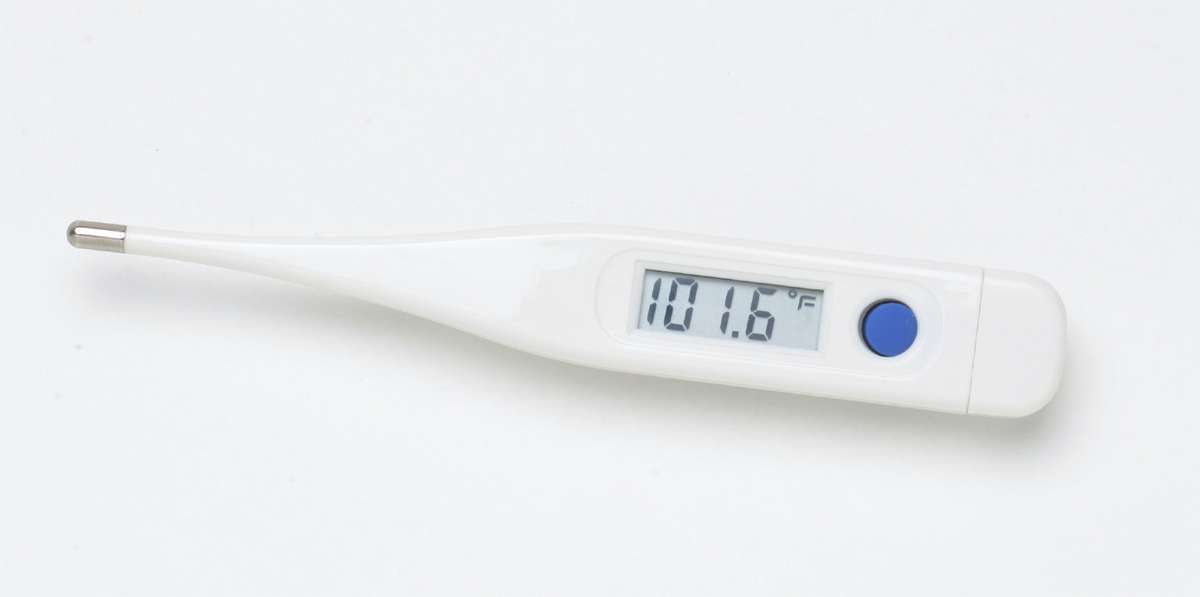Is my kid’s infection viral or bacterial? Test may offer clues

If you have a little kid, you know the drill.
Your child develops a nasty fever, but no one’s really sure what’s making him sick. Most likely, he has a virus that will run its course. He may have a scary bacterial infection that requires treatment, but results of tests to confirm this won’t come back for a day or so. So to be safe, your pediatrician prescribes antibiotics -- even though they won’t help fight a virus and even though overuse of antibiotic drugs has led to the evolution of drug-resistant superbugs.
But someday soon, researchers said Monday, it may be easier to avoid unnecessary antibiotic use: Physicians may soon be able to determine if an infection is viral or bacterial by looking at which genes are turned on and off in a patient’s cells.
“It’s very important for physicians to distinguish between bacterial and viral infections,” said Dr. Gregory Storch, chief of the division of pediatric infectious disease at the Washington University School of Medicine in St. Louis. “We have a very big problem society-wide with antibiotic resistence.”
In a study published online (abstract here) by the journal Proceedings of the National Academy of Sciences, Storch and colleagues explained how such a test might work. The team studied 57 kids who had been treated at St. Louis Children’s Hospital. Of the children, 22 had come to the hospital with fevers but no obvious source of illness, and 35 did not have a high temperature.
As part of an earlier experiment, the researchers ran tests to determine the cause of the kids’ fevers, determining that 14 had viral infections and eight had bacterial infections. They also found that 13 of the children without fevers had viral infections. For this analysis, the group returned to white blood cells from the blood samples from the children and looked at gene expression -- what genes were turned on or turned off -- by measuring messenger RNA levels.
Among the kids with fevers, the scientists found patterns of gene expression that were characteristic of viral infection and different patterns that were characteristic of bacterial infection. Both groups of kids with fevers had different patterns than kids without fevers, even when the asymptomatic kids were known to be infected with a virus.
The results suggest that before long, physicians may be able to look at gene expression to figure out quickly if a child has a viral or bacterial infection. Today, doctors typically depend on white blood cell counts, which are “imperfect” and not as accurate as the gene expression analysis, Storch said.
The gene expression test isn’t practical for widespread use just yet. The Washington University team initially looked at 1,500 genes that were up- or down-regulated in each of the children. The team was also able to pick out the distinctive patterns by looking at expression in a narrower set of 18 significant genes, but even that “is still a little bit much for current technology,” Storch said.
But with technology advancing at a rapid rate, he added, such a test might be practical before too many years.
As for how many unnecessary antibiotic prescriptions might be avoided if an effective test came into widespread use, Storch noted that in his team’s original study, half of the kids who were later found to have viral infections were treated with antibiotics by their doctors just “to be safe” -- even though the physicians at St. Louis Children’s Hospital “have a good awareness” of antibiotic overuse and try “to be discriminating,” he said.
“In an optimal case, 50% are being treated,” he said. “Maybe we could cut that down to zero.”







